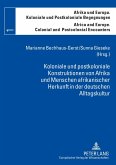Celebrated for its ancient water wheels, the town of Hama is located on Syria's longest river, the Orontes. Ottoman Hama was a stopover on the major north-south road of Syria as well as the center of a local economic zone of its own. Intertwined social networks linked townspeople to the peasants and pastoral nomads of Hama's hinterland. By the early twentieth century a few elite and notable families had come to dominate the political and economic life of Hama and its outlying villages, setting the stage for the city's dramatic entry into Syrian national life during the French Mandate and post-colonial periods. Based principally on local judicial archives, this book is a social history of Hama during the last two centuries of Ottoman rule. It examines the social and economic structures that defined people's lives and that conditioned their participation in the historical changes of the eighteenth and nineteenth centuries. Dramatis personae include men and women, commoners and notables, merchants and artisans, and others who, taken together, represent a cross-section of a Middle Eastern society as they entered the world of global markets, European empires, and modern states.
"Reilly beschreibt und modifiziert am Beispiel Hamas Trends und Entwicklungslinien, wie sie die Geschichtsschreibung zum osmanischen Syrien im Laufe der letzten Jahrzehnte für das 18. und 19. Jahrhundert herausgearbeitet hat. [...] Die Einbindung in die laufenden Diskussionen ist zweifellos eine große Stärke dieser kurzen, sehr flüssig und leicht verständlich geschriebenen Fallstudie. Sie bietet allgemein historisch Interessierten einen guten Überblick über Themen und Ansätze der jüngeren Geschichtsschreibung zu den arabischen Provinzen des Osmanischen Reiches und vertieft diese in überaus anregender Weise an einem Fallbeispiel." (Astrid Meier, H-Soz-u-Kult)
"Reilly's book is a veritable mine of previously unknown information about Hama. It is also a work of analysis and synthesis, of judicious and insightful observations. [...] 'A Small Town in Syria' is truly representative of a wider Syrian reality. Not only is it a major contribution to the fields of Syrian and Middle Eastern studies, but it also sets a standard for the study of social and economic history of Ottoman Arab cities. Both the author and the publisher must be complimented for producing an error-free text. I strongly recommend this book to scholars and laypersons alike." (Abdul-Karim Rafeq, Bulletin of the Royal Institute for Inter-Faith Studies)
"Reilly's scholarly contribution not only helps us to understand the way that a small town functioned, but also can help future scholarship to understand the bigger picture of urban Syria and the urban history of the Ottoman Empire." (Nelly Hanna, H-Gender-MidEast, H-Net Reviews)
"Reilly's book is a veritable mine of previously unknown information about Hama. It is also a work of analysis and synthesis, of judicious and insightful observations. [...] 'A Small Town in Syria' is truly representative of a wider Syrian reality. Not only is it a major contribution to the fields of Syrian and Middle Eastern studies, but it also sets a standard for the study of social and economic history of Ottoman Arab cities. Both the author and the publisher must be complimented for producing an error-free text. I strongly recommend this book to scholars and laypersons alike." (Abdul-Karim Rafeq, Bulletin of the Royal Institute for Inter-Faith Studies)
"Reilly's scholarly contribution not only helps us to understand the way that a small town functioned, but also can help future scholarship to understand the bigger picture of urban Syria and the urban history of the Ottoman Empire." (Nelly Hanna, H-Gender-MidEast, H-Net Reviews)








